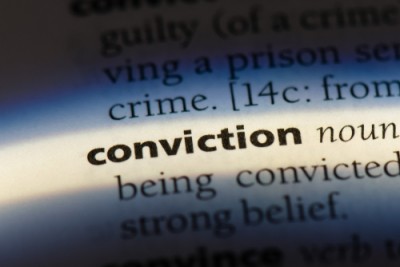Police and prosecutor misconduct contributed to over half of false-conviction cases, new study finds

Image from Shutterstock.com.
Police and prosecutor misconduct that distorted evidence or undercut innocence contributed to 54% of false convictions that later resulted in exonerations, according to a report released Tuesday.
The study, by the National Registry of Exonerations, is based on information in its database of wrongful convictions from the first 2,400 exonerations.
Misconduct included witness tampering, in which a witness is tricked or persuaded to give false testimony or make an identification; violence, lying and coercive conduct in interrogations; fabricated evidence, including planted drugs and forensic fraud; concealed exculpatory evidence; and misconduct at trial, including perjury by policy and lying by prosecutors.
The report warned that the findings are a measure of misconduct in exoneration cases—not a measure of the frequency of misconduct in all cases.
“What we can say,” the report said, “is that official misconduct is a major cause of convictions of innocent defendants.”
The study defined an exoneration as a person being convicted and then declared factually innocent by a government official or agency, based at least in part on evidence of innocence. The declaration can be in the form of a complete pardon, an acquittal in a retrial, or a dismissal of all charges by a court or a prosecutor.
The study found several major patterns:
• Misconduct was committed by police officers in 35% of cases, by prosecutors in 30% of the cases, by forensic analysts in 3% of cases, and by child welfare workers in 2% of cases.
• In general, the rate of misconduct is higher in more severe crimes. The rate of misconduct was 72% in murder cases, compared to 32% for most nonviolent crimes.
• Black exonerees were slightly more likely than whites to have been victims of misconduct (57% to 52%), but the gap is much larger among exonerations for murder (78% to 64%) and for cases with death sentences (87% to 68%). The misconduct gap between Black and white exonerees also occurred in drug cases (47% to 22%).
• Prosecutors and police officers committed misconduct at about the same rate in state court cases that resulted in exonerations. But prosecutors in federal exonerations committed misconduct more than twice as often as police and committed misconduct seven times as often as police in exonerations for white-collar crimes.
• The most common type of misconduct was concealing exculpatory evidence, which occurred in 44% of exonerations.
The New York Times, Courthouse News Service, the Detroit News and USA Today are among the publications that covered the report.
Courthouse News Service spoke with Samuel Gross, the senior editor of the report and a law professor emeritus at the University of Michigan. He said there are many causes for misconduct, “including just trying to deal with cases quickly and cheaply.”
Another problem according to David Thomas, a professor of justice studies at the Florida Gulf Coast University, is the politicization of work by police and prosecutors.
“Those are positions that should never be politicized,” Thomas told Courthouse News Service. “And yet their very existence and success or failure is based on public opinion.”
The report recommended several changes to prevent misconduct. They include requirements for the recording of interrogations and lineups, the use of independent crime labs that are not run by police departments, and the creation of conviction integrity units in prosecution offices.
Gross told the Detroit News that most of the rules had to prevent misconduct are already in place.
“We need enforcement but also adequate resources to do a good job, supervision and especially leadership,” he said. “We need to change entrenched work cultures.”



